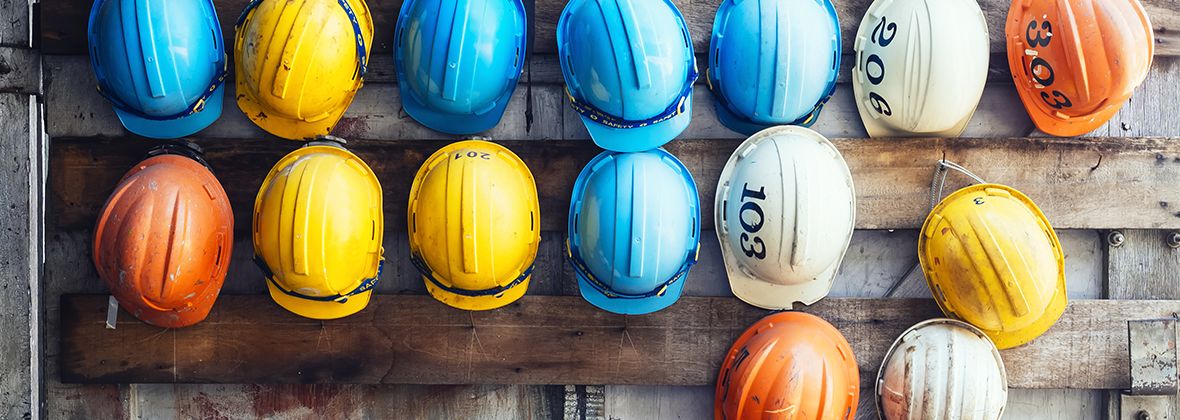

Sign In
Welcome! Sign In to personalize your Cat.com experience
If you already have an existing account with another Cat App, you can use the same account to sign in here
Register Now
One Account. All of Cat.
Your Caterpillar account is the single account you use to log in to select services and applications we offer. Shop for parts and machines online, manage your fleet, go mobile, and more.
Account Information
Site Settings
Security
THE IMPORTANCE OF HAVING AN EFFECTIVE CONSTRUCTION SAFETY CULTURE
A CHECKLIST TO HELP YOUR BUSINESS WORK SAFER ON THE JOB AND IN THE OFFICE
A strong, consistent, and proactive safety culture can go a long way toward preventing accidents among employees and reducing the negative outcomes that arise from on-the-job injuries. Leverage this high-level checklist to guide and evaluate your efforts to make your jobsites safer and more productive.
Your checklist for building a healthy and safety-first culture
The basics of construction safety
- Regularly emphasize employee training and education efforts. Make sure workers know the nuts and bolts of how to use personal protective equipment and potentially dangerous machinery.
- Educate employees about how to perform duties safely in areas of elevated risk, such as heights or confined spaces.
- Ensure all literature required by the Occupational Safety and Health Administration, as well as other local, state, and federal agencies, are posted in an easily accessible area so they can be consulted by workers at any time.
- Ensure your staff regularly inspects the safety equipment in addition to the job tools and machinery they use during each shift.
- Don't allow staff to cut corners. Set an expectation from the top down that any willful or intended workaround or disregard of safety rules is a serious problem and can lead to accidents.
- Develop budgets that provide sufficient funding to address all relevant safety concerns including scaffolding, respirators, and basic safety items like glasses and work gloves.
Develop a practical and conceptual understanding of construction
- Provide training whenever new equipment is used and periodically offer refresher courses on safe operations in addition to safety education for new hires.
- Establish a culture of safety from day one. Reinforce the companywide commitment to safety during the interview process and when initiating contact with contractors. Host discussions with new hires about the practical importance of safety, noting both the benefits of avoiding personal injury and the negative outcomes businesses can experience due to accidents on the jobsite.
- Set safety goals and offer positive rewards when they are achieved or surpassed.
- Ensure workers feel comfortable asking questions and identifying potential or existing issues related to safe working conditions without fear of any negative consequences. Offer opportunities for face-to-face conversations and to provide anonymous feedback.
Involve senior leadership
- It's easier to communicate the importance of construction safety clearly when no one is exempt from the rules. Even those in senior leadership roles should be included in your efforts to establish a safety-first culture.
- Hold a safety seminar twice a year for all workers. These seminars can serve as a forum for conversation, an opportunity to emphasize site-specific safety considerations, and discuss successes and improvement opportunities. Including senior staff members in your efforts can help to reinforce your company's commitment to safety at every level.
- Involve the owner and other top officials in safety demonstrations. Their willingness to learn and participate will have a positive effect on employees attending the event.
- Encourage senior leadership to participate in safety walk-arounds and internal inspections. Their presence on the job site can reassure workers that the business cares about keeping them safe on the job.
Recognize warning signs of erosion in the safety culture
- Remember that temperature, weather, and trying to finish a difficult task by the end of a shift can negatively influence workers to cut corners even with a strong safety culture in place.
- Identify and track any problem areas, even if it's something as seemingly minor as workers not inspecting and changing their work gloves when necessary. Discuss the issue individually with workers whom are breaking any rules, regardless of the violation.
- Utilize safety seminars, training sessions, and refresher courses to emphasize potential problem areas throughout your company.
- Praise workers use positive reinforcement for following safety requirements to combat erosion whenever possible.
Job site safety goes beyond the job site
- Discourage and explain the dangers of using a cell phone while driving, traveling long distances after work - especially after working overtime and double shifts. Distractions caused by mobile devices cause a lack of awareness of heavy machinery and vehicles entering and exiting the job site.
- A surprising number of jobsite injuries can be influenced by off-the-job habits. Stress the importance of living a healthy lifestyle including consuming nutritionally-balanced meals and having proper sleep schedules; 7 - 9 hours per night based on individual needs.
Get specific with Cat equipment
- Heavy equipment is a crucial component to a successful construction project, but it can also be dangerous when not used, monitored and maintained effectively. Use these vehicle-specific checklists to improve the safety and performance of your Cat equipment.
-
Business Health: Identifying Priorities That Contribute to Growth
The financial and operational health of your business influences many actions you take as an owner, from the type of jobs you bid on to whether you can acquire new heavy equipment and other assets.
Learn More -
Business Health: Managing Risk to Make Effective Investments
How do you approach business risk? Answering this important question can help you maximize your resources.
Learn More -
Business Health: The Basics of a Profitability Review
Conducting a basic profitability review can help you identify opportunities for growth and where to cut spending.
Learn More -
Equipment Financing Information From Cat Financial
Request equipment financing information or start the financing process now.
Make a Request
